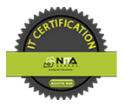Introduction
In the complex world of supply chain management, efficiency and accuracy are paramount. Warehouse Management Systems (WMS) and Enterprise Resource Planning (ERP) systems are two crucial tools that businesses use to streamline operations and enhance productivity. When these two systems are integrated, the benefits multiply, leading to optimized processes, reduced costs, and improved decision-making. This blog explores the benefits of integrating WMS with ERP and offers best practices for a successful integration.
Understanding WMS and ERP Systems
A Warehouse Management System (WMS) focuses on optimizing warehouse operations, including inventory management, order fulfillment, and shipping. It provides real-time visibility into inventory levels, enhances order accuracy, and improves warehouse efficiency.
An Enterprise Resource Planning (ERP) system, on the other hand, is a comprehensive software solution that integrates various business processes, such as finance, human resources, procurement, and supply chain management. ERP systems provide a unified platform for managing and analyzing business operations, facilitating better decision-making and strategic planning.
Benefits of Integrating WMS with ERP
- Enhanced Data Accuracy and Visibility: Integration ensures that data flows seamlessly between the WMS and ERP systems. This real-time data synchronization eliminates discrepancies and provides accurate, up-to-date information across the organization. Enhanced visibility into inventory levels, order status, and financial data leads to better decision-making and improved customer service.
- Streamlined Operations: Integrating WMS with ERP automates many manual processes, reducing the need for duplicate data entry and minimizing the risk of errors. Streamlined operations lead to increased efficiency, faster order processing, and reduced lead times, ultimately enhancing overall productivity.
- Improved Inventory Management: Integration allows for real-time tracking of inventory levels, movements, and transactions. This helps in maintaining optimal inventory levels, reducing stockouts, and minimizing excess inventory. Accurate inventory data also enables better demand forecasting and replenishment planning.
- Cost Savings: By automating processes and improving data accuracy, integration reduces operational costs associated with manual data entry, inventory holding, and order fulfillment errors. Enhanced efficiency also leads to lower labor costs and improved resource utilization.
- Better Customer Service: Integration provides a unified view of customer orders, inventory availability, and shipping status. This enables faster and more accurate order fulfillment, leading to improved customer satisfaction and loyalty.
- Enhanced Reporting and Analytics: Integrated systems provide comprehensive data for reporting and analytics. Businesses can generate detailed reports on inventory performance, order fulfillment rates, financial metrics, and more. Advanced analytics help identify trends, uncover insights, and support data-driven decision-making.
Best Practices for Integrating WMS with ERP
- Define Clear Objectives: Before starting the integration process, clearly define the objectives and expected outcomes. Understand the specific needs of your business and how the integration will address those needs. This helps in setting realistic goals and measuring the success of the integration.
- Choose the Right Integration Approach: There are several integration approaches, such as point-to-point integration, middleware-based integration, and API-based integration. Choose the approach that best suits your business requirements, considering factors like scalability, flexibility, and ease of maintenance.
- Involve Key Stakeholders: Successful integration requires collaboration between various departments, including IT, warehouse management, finance, and customer service. Involve key stakeholders from the beginning to ensure that all requirements are considered and to gain buy-in for the project.
- Plan for Data Migration: Data migration is a critical step in the integration process. Plan for a smooth migration of data from the WMS to the ERP system, ensuring data accuracy and consistency. Conduct thorough testing to identify and resolve any data migration issues.
- Ensure System Compatibility: Ensure that the WMS and ERP systems are compatible and can communicate effectively. This may involve customizing interfaces, configuring middleware, or developing APIs to facilitate seamless data exchange.
- Focus on Training and Change Management: Integration often brings changes to existing processes and workflows. Provide comprehensive training to employees to help them adapt to the new systems and processes. Effective change management strategies, including clear communication and ongoing support, are essential for a smooth transition.
- Monitor and Optimize: After integration, continuously monitor the performance of the integrated systems. Use analytics and reporting tools to identify areas for improvement and optimize processes. Regularly update and maintain the systems to ensure they continue to meet business needs.
Final Thoughts
Integrating a Warehouse Management System with an Enterprise Resource Planning system offers numerous benefits, from enhanced data accuracy and streamlined operations to cost savings and improved customer service. By following best practices and focusing on clear objectives, businesses can successfully integrate these powerful tools and unlock new levels of efficiency and productivity in their supply chain operations. As the business landscape continues to evolve, the integration of WMS and ERP will remain a critical strategy for achieving competitive advantage and long-term success.
Blog Reviewed by Govindarajan











